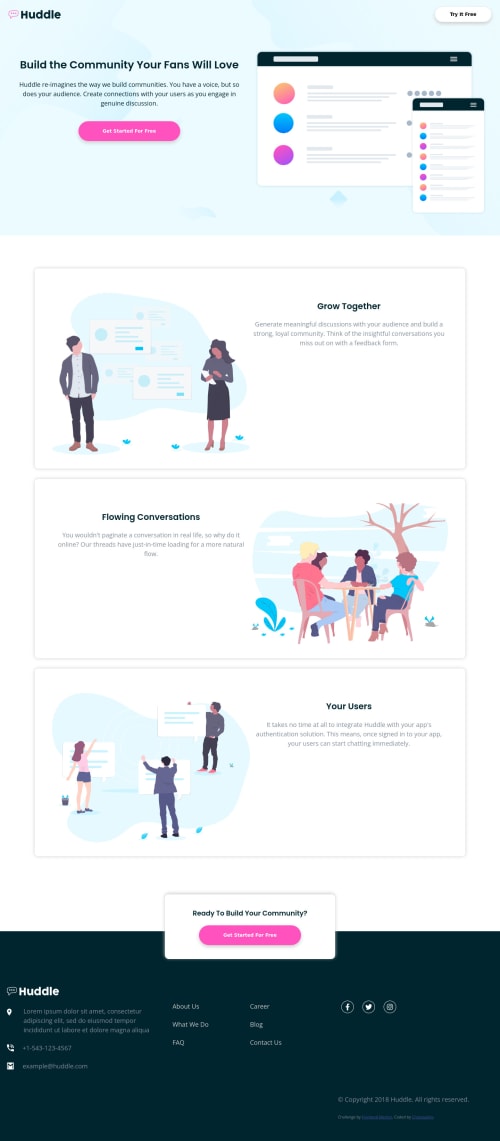Landing page using HTML and CSS

Solution retrospective
I enjoyed building this. This is the fifth challenge I'm completing on FrontendMentor. I like this website. Please leave feedback on how I can improve
Please log in to post a comment
Log in with GitHubCommunity feedback
- @PhoenixDev22
Hi chiozoadiro,
Congratulation on finishing this challenge. Great job on this one! I have few suggestions regarding your solution:
HTML
- The logo's alternate text should not be
empty. You can use the website's name as an alternate text alt="Huddle". - For future use , it's a good habit of specifying the type of the button to avoid any unpredictable bugs.
- look up a bit more about how and when to write alt text on images. Learn the differences with decorative/meaningless images vs important content. For decorative images, you set an empty
altto it with anaria-hidden=”true”to remove that element from the accessibility tree. This can improve the experience for assistive technology users by hiding purely decorative images. For informative images (add content to the body ), you should add a descriptive alternate text and omit the word image. - You put your social links within an unordered list structure so that a screen reader will read out how many things are in the list to give visually impaired users the most information possible about the contents of the navigation.
- The links wrapping the social svgs must have aria-label or sr-only text indicate where the link will take the user. Then add
aria-hidden=”true”and `focusable=”false”`` to the svgs to be ignored by screen readers to avoid redundancy and repetition. - Adding
rel="noopener"orrel="noreferrer"totarget="_blank"links. When you link to a page on another site using target=”_blank” attribute , you can expose your site to performance and security issues.
Hopefully this feedback helps.
- The logo's alternate text should not be
Join our Discord community
Join thousands of Frontend Mentor community members taking the challenges, sharing resources, helping each other, and chatting about all things front-end!
Join our Discord